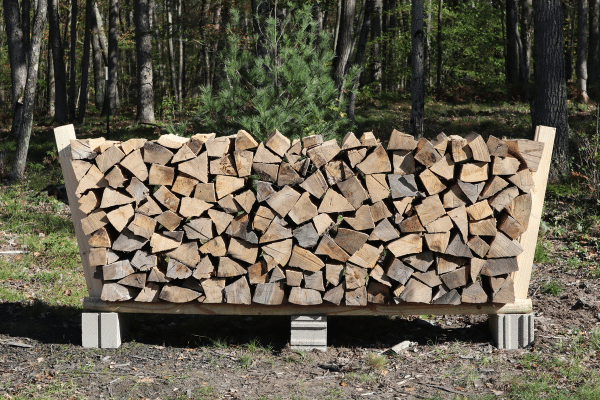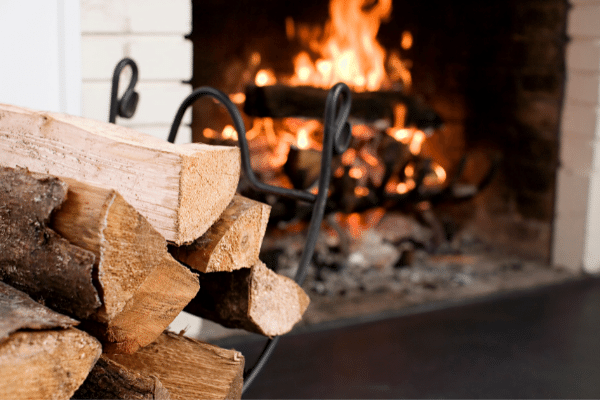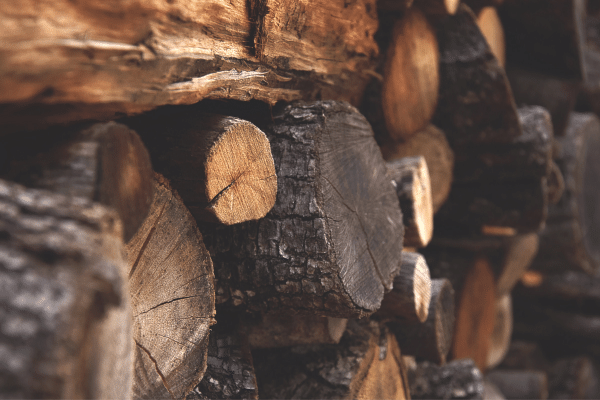- Home
- Best Firewood
- Best Way to Store Firewood
The Best Way To Store Firewood
This post may contain affiliate links so I earn a commission.
Choosing the best way to store firewood will not only create hot burning and hassle free fires, but it will keep your home safer in the process.
Cutting firewood takes a lot of time.
After you've bucked the logs and split the wood, you still have one very important step left to insure your firewood is the best that it can be, and that's making sure it's properly stacked in a location that allows the wood to dry, while keeping it safe from mold and pests.
A common mistake many homeowners make is choosing to stack firewood too close to their home.
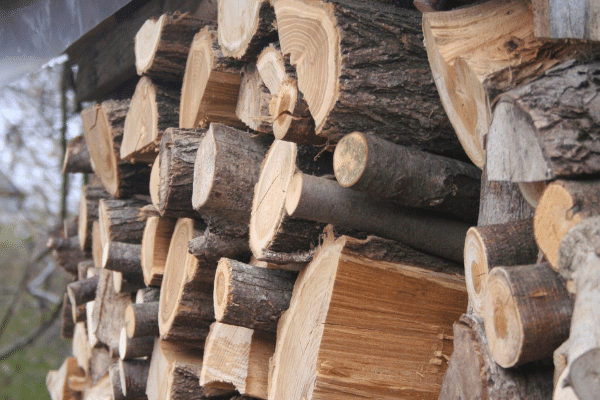
Sure, it makes it convenient to grab a piece of wood in the middle of winter, but storing firewood next to your house, or even worse, inside your home or basement is a bad idea.
Why?
Wood stacked along a home will attract all kinds of insects, rodents and pests.
A wood pile often makes the perfect winter shelter for mice, chipmunks, spiders and carpenter ants, all of which can cause serious problems to your house.
So, although there are a handful of great options for stacking and protecting your firewood, the best way to store firewood is away from your home, but in a spot that receives plenty of sunlight.
The Problem With Stacking Firewood Inside
Freshly cut firewood contains a lot of moisture.
This moisture needs sun and wind to help it dry to a useable moisture level, which is around 20 percent.
Once the wood has been allowed to dry or "season" to around 20 percent moisture content, it's considered safe to burn.
Wet firewood will smoke, smolder and simply does not like to burn.
Have you ever thrown a log into a fire only to hear it sizzle?
That's because the heat from the fire is attempting to evaporate the moisture from the wood before it's dry enough to actually burn.
As these unburnt gases travel up your chimney, they adhere to the chimney walls creating creosote.
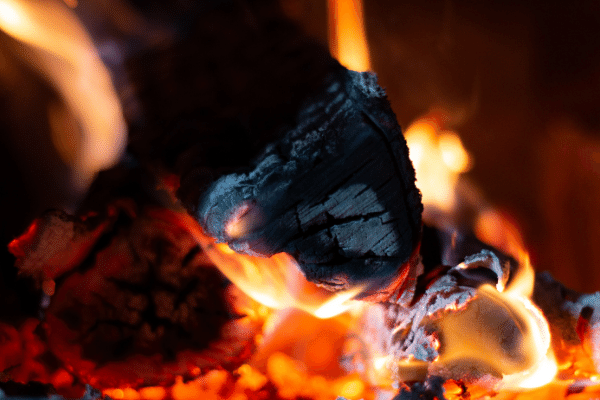
Creosote is what causes chimney fires.
So, as you can see, burning dry firewood is very important.
Firewood stacked in a basement also promotes mold growth on the wood.
Since basements are damp to begin with without much air flow, it creates the perfect atmosphere for wood to grow mold and fungus.
If you want to keep a one or two day supply of firewood next to your wood stove or fireplace, that's not an issue.
However, you'll want to make sure your main supply of firewood is located outdoors and away from your home.
The Best Location To Store Your Firewood
Often times, the best way to store firewood is all about location.
Choose an area that's away from your home that receives a lot of sunlight.
I like to store my firewood at least 30 feet from any nearby barn or structures to ensure bugs and pests are safety away from these areas.
Avoid places that are shaded from nearby trees or sit in low spots that are sheltered from the wind.
The summer sun and wind places a very important roll in drying out firewood.
Although some species like red oak can take longer, firewood takes around 6-12 months to fully season, so you'll want to choose a spot that you can use for a while and dedicate just for your firewood.
The Best Way To Stack Firewood
The best way to store firewood includes knowing how to properly stack the wood.
Firewood should be stacked in rows that are not higher than 4 feet tall.
Wood stacked higher than 4 feet becomes very unstable.
Trust me, there's nothing more frustrating than coming out after a strong wind storm only to find that you have to completely re-stack a row of firewood that has fallen over.
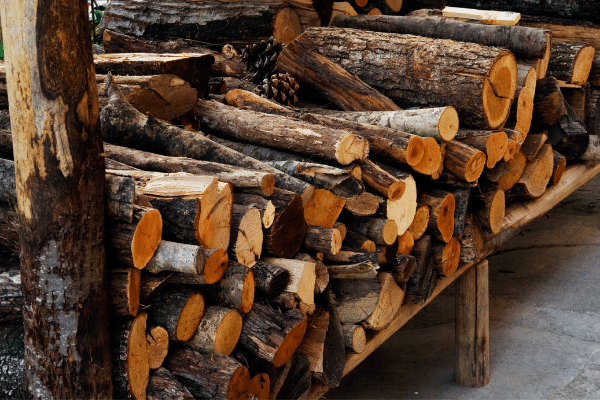
When stacking multiple rows of wood, keep a few inch gap between the rows.
This gap will allow the wind to blow throughout the stack, drying the wood from all sides.
Elevating the wood off the ground is also important.
To elevate the wood you can use a firewood rack, or you can stack the wood on pallets.
Elevating the wood allows the wind to flow under the stack, and it also reduces ground moisture from rotting out the wood on the bottom row.
Covered vs Uncovered Firewood
A designated shed is often the best way to store firewood and it's my personal favorite.
However, a well ventilated shed with a roof can be a costly investment.
If you don't burn a lot of firewood every year, chances are a large shed is hard to justify.
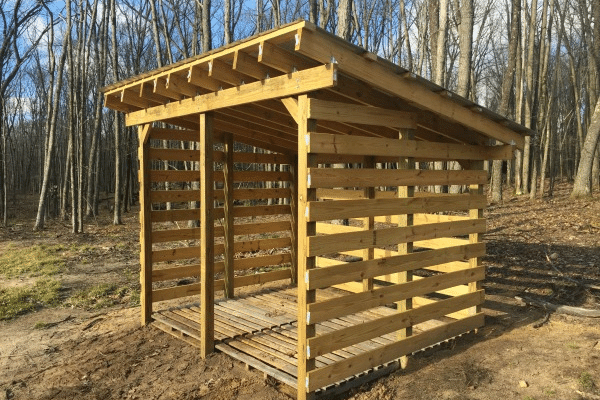
Whether you're using a firewood rack, or some pallets with T posts pounded in the ground on each end for support, you'll want to cover the top 1/3 portion of the firewood stack to repel rain and snow.
Don't cover the entire stack because you need to allow the moisture from the wood to escape.
A tarp from your local home improvement store works great, just make sure you tie it down so it doesn't blow away.
How To Tell When Your Firewood Is Dry
As we mentioned earlier, wet firewood will take around 6-12 months to fully season.
Dry firewood will look grey and aged.
Nice, clean, brown firewood is still wet.
Basically, the uglier and older the firewood looks, the better it will burn.
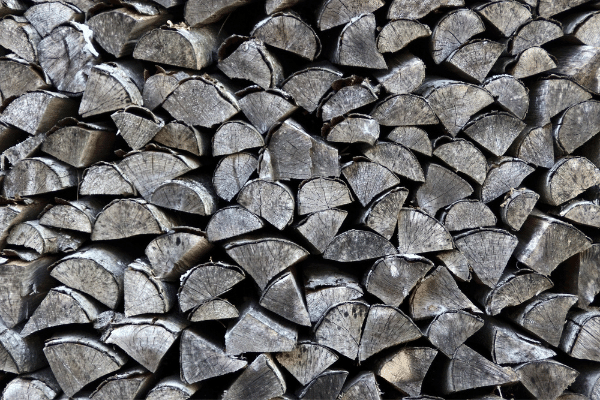
You can also take two pieces of wood and bang them together to tell how dry the wood is.
Dry wood will make in "ting" sound while wet wood will make a "thud" sound.
Dry firewood is also a lot lighter than wet wood.
This is due to the reduced moisture content inside the wood.
The Best Way To Store Firewood - Overall
Choosing the best way to store firewood will make your wood burning experience much more enjoyable.
Dry firewood starts easier, burns hotter and creates less smoke and creosote.
Just make sure you keep the wet wood away from your home while it drys and use some of the tips above to quickly and effectively dry out the wood, and you'll have plenty of seasoned firewood to last throughout the year!
